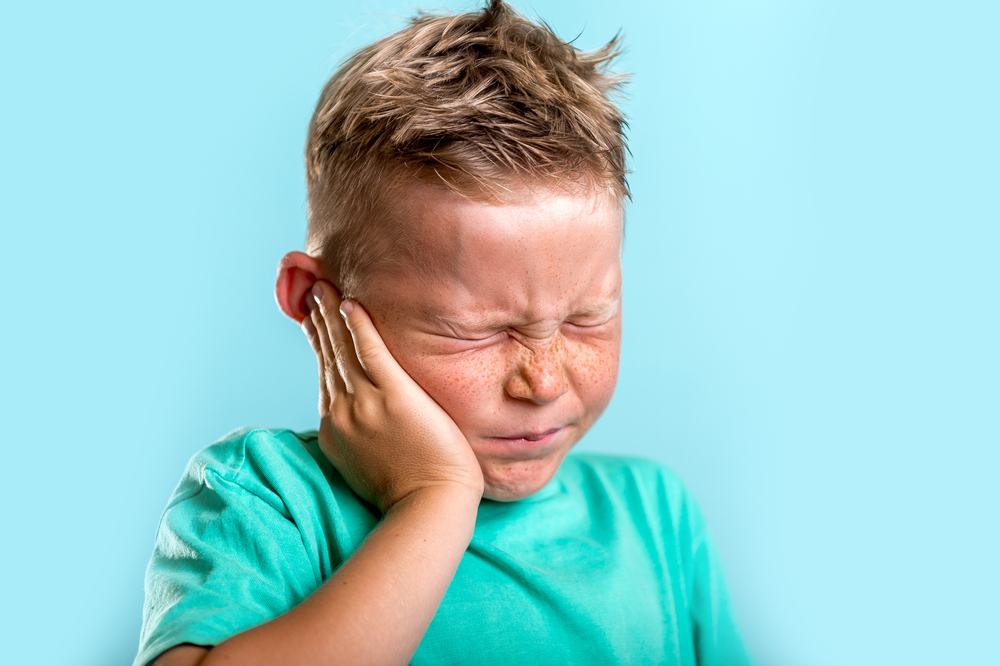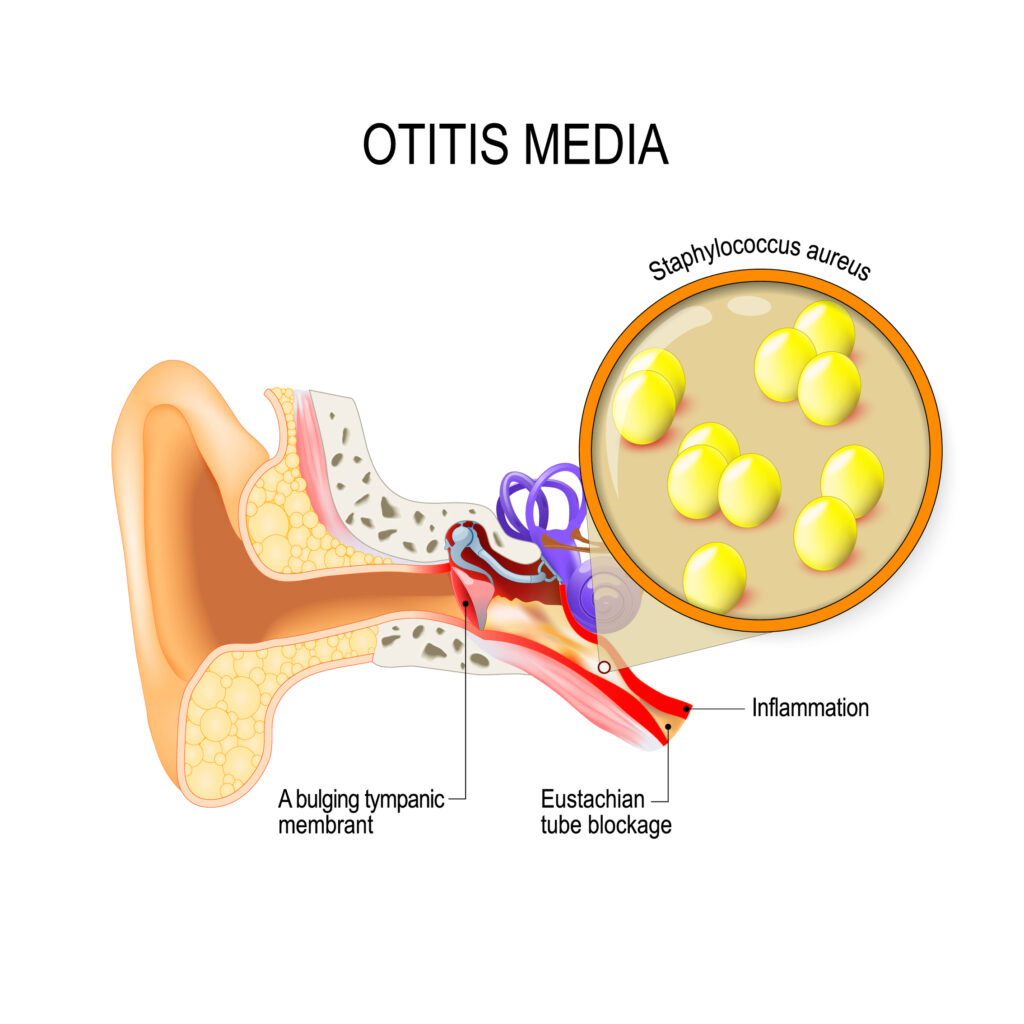
menu

Posted in Uncategorized | February 22, 2024

Does your child pull or rub their ears frequently? Are they constantly acting fussy or crying more than usual?
They may have an ear infection. While anyone can get an ear infection, children are more prone to ear infections than adults.
Ear infections can be painful and distressing for children as they can cause earache, fever, balance issues, and other unpleasant symptoms. Keep reading to learn more about ear infections in children, including symptoms, how frequently children have ear infections, and what you can do to prevent your child from getting ear infections.

An ear infection or otitis media is an inflammation of the middle ear, the air-filled space behind the eardrum. The space contains tiny bones of the ear or ossicles that vibrate, making it possible to hear. Ear infections occur when fluid builds up behind your child’s eardrum.
Eustachian tubes, which are narrow tubes connecting the middle ear to the back of the throat, can become swollen and blocked in an ear infection. Eustachian tubes regulate air pressure in the ear and drain fluid made in the middle ear.
When swelling or blockages occur in these tubes, mucus can’t drain effectively and accumulates in the middle ear. The mucus may allow bacteria or viruses to breed, causing an ear infection.
Ear infections may be viral or bacterial. Some children get an ear infection once or from time to time. If so, it’s known as an acute ear infection.
An acute ear infection lasts for a short period and is painful. Other children have ear infections that last a long time or go away only to return as many as three times within six months or four times per year. These kinds of ear infections are called chronic ear infections.
Chronic ear infections are more severe and can cause permanent or long-term damage to the inner and middle ear.
Common triggers of ear infections in children include:
Usually, ear infections clear on their own but can be painful due to fluid buildup or inflammation. If an ear infection doesn’t go away, your child may need pain-relieving medications, antibiotics, or ear tubes to treat the infection.

The most common symptom of an ear infection is ear pain. If your child can’t say they have an earache, the following non-verbal cues could be tell-tale signs of an ear infection.
If your child has ear infections frequently, you’re not alone. Five out of six children will have at least one ear infection by the time they reach age 3, and many experience multiple infections during this period.
Children are more likely to develop ear infections than adults for several reasons:
Eustachian tubes tend to be shorter and more horizontal in children than adults. For this reason, fluid in the middle ear doesn’t drain properly, even when a child is healthy.
The tubes are also narrower, so they are highly likely to become blocked. If your child has a cold, throat infection, or an upper respiratory infection, excess mucus can block the eustachian tubes, preventing fluid from draining.
Bacteria and viruses can easily get trapped in the accumulated fluid, leading to an ear infection. The eustachian tubes become more vertical and work more effectively as you age. For this reason, adults have fewer ear infections.
Adults have fully developed immune systems. Their more robust immune systems keep them from getting ear infections often.
In contrast, the immune systems of young children are still developing. Because of this, children are less capable of fighting off infections like the flu or colds that can contribute to ear infections.
The adenoids are tiny lumps of soft tissue in the upper airway between the back of the throat and behind the nose. If you were to look into your child’s mouth or nose, they wouldn’t be visible.
Adenoids are less necessary as you get older since your body starts developing other ways to fight germs. However, adenoids are an essential part of the immune system in children.
Adenoids help the body fight off infections by trapping harmful viruses or bacteria swallowed or inhaled. Adenoids often become inflamed and swollen in their line of duty as they combat infections.
The adenoids are located close to the eustachian tubes. They can obstruct the eustachian tubes and prevent fluid from draining as they swell.
Fluid buildup creates the perfect environment for bacteria and viruses to thrive, which can lead to repeated ear infections.
You can minimize your child’s risk of developing ear infections. They include:

One of the best defenses against colds and the flu and, therefore, ear infections is to keep your hands clean. Frequently wash your hands with soap and running water.
Remember to wash your child’s hands, too. Handwashing goes a long way in curbing the spread of germs that can cause colds or ear infections.
It’s particularly crucial when preparing food, before eating, after using the bathroom, and after sneezing, blowing your nose, and coughing.
Breast milk is healthy for babies. It’s loaded with antibodies, which can help decrease the risk of ear infections. If you can, breastfeed for the first 6 to 12 months.
Make sure your child’s immunization is up-to-date. Children who are up-to-date on vaccinations tend to experience fewer ear infections.
The flu vaccine can safeguard against ear infections. The 13-valent pneumococcal conjugate vaccine (PCV13) also protects children against streptococcus pneumoniae, one of the causes of ear infections.
Talk to your child’s pediatrician about other necessary vaccines, too.
Do your best to keep your child away from adults and children who are sick, as it increases their chances of catching infections, including ear infections.
Our experienced pediatric ENTs at Specialty Care Institute can accurately diagnose and treat ear infections to help your child feel better quickly. Does your child have frequent or chronic ear infections?
Schedule your appointment today at Specialty Care Institute in Arlington Heights, Barrington, Elgin, or Hoffman Estates, IL, to stop the cycle of ear infections.